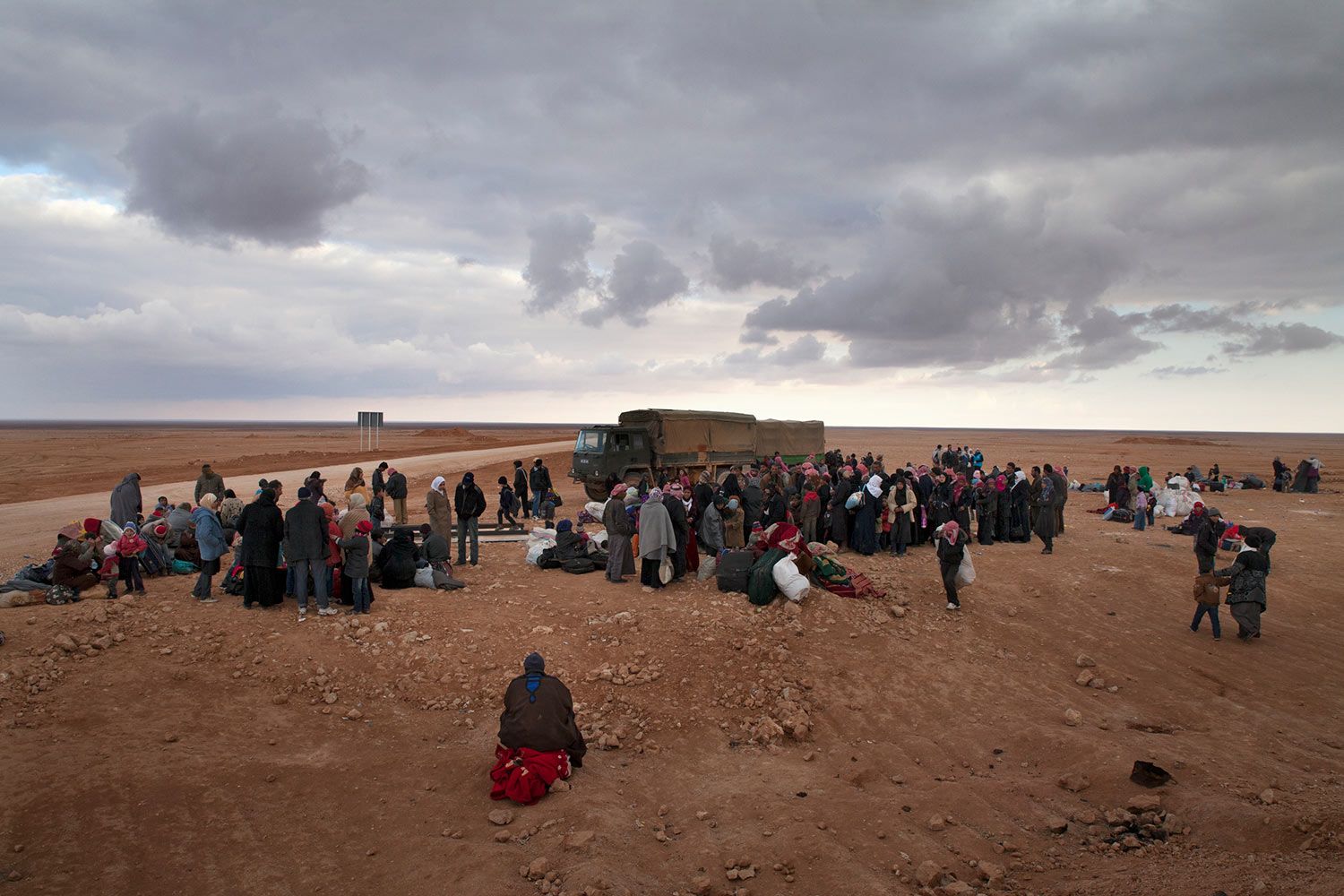This website does not support Internet Explorer, your current browser.
Please view the site with a modern browser such as Google Chrome or Mozilla Firefox.
Diplomatic sanctions
Case Illustrations
The United States used diplomatic sanctions to help prevent or respond to mass atrocities in both Syria and Burma/Myanmar. Read the brief illustrations below to learn how this tool was used in these cases:
Syria (2011–present)

Refugees at the Syrian Border. —Lucian Perkins for US Holocaust Memorial Museum
The United States has used diplomatic sanctions in its efforts to draw attention to the Syrian government’s campaign of violence against its civilian population and to ostracize the Assad regime. Diplomatic sanctioning of Syria began in February 2012, when the United States, alongside a number of other nations, suspended consular operations and closed its embassy in Damascus, while criticizing the Syrian government for its brutality (Shadid 2012). In response to a government-led massacre of 108 civilians in May 2012, the United States then expelled the chargé d’affaires at the Syrian embassy in Washington (Keating 2012). The United States further ratcheted up diplomatic sanctions against President Assad in early 2014, shuttering the Syrian embassy in Washington and mandating the removal of all non-US citizen Syrian consular staff across the country (DeYoung 2014). Secretary of State John Kerry said that Assad had lost the legitimacy to govern, and the US State Department recognized the Syrian opposition as the “legitimate representative of the Syrian people” (Reuters 2014; Gordon 2014).
Burma/Myanmar (1988–2019)

Burma. March 2012. —Paula Bronstein Getty Images Reportage for US Holocaust Memorial Museum
Following a violent coup in 1988, the United States applied economic and diplomatic sanctions (Singh 2006). The US ambassador to Burma refused to meet with regime leaders in order to prevent legitimizing their brutal and undemocratic actions (Steinberg 2010). After the military rulers nullified the 1990 elections, which had resulted in a resounding victory for protest leader Aung San Suu Kyi, the United States officially downgraded diplomatic ties from the ambassadorial to the chargé d’affaires level (NPR 2013; Steinberg 2010). The United States implemented a visa ban for junta members and others that benefited from military rule and lobbied for ASEAN countries to reject Burma’s membership in the regional intergovernmental organization (Singh 2006). In 2012, the United States lifted some sanctions and took steps toward normalizing relations with Burma, following initial steps toward democratization (Myers and Fuller 2012). In response to the military’s genocidal attacks against the Rohingya in 2017, the US State Department instituted visa sanctions against Burmese officials and extended sanctions to two top military leaders in 2019 (US Department of State 2021).